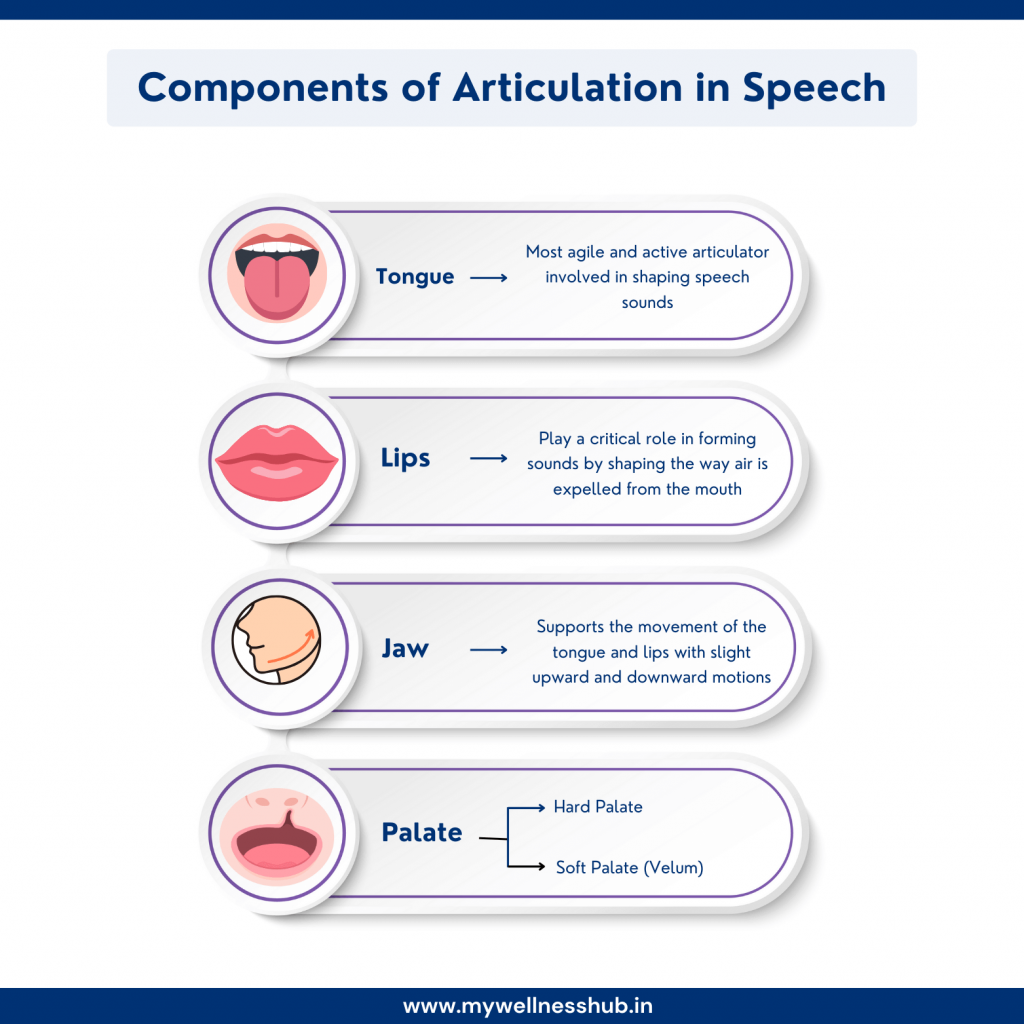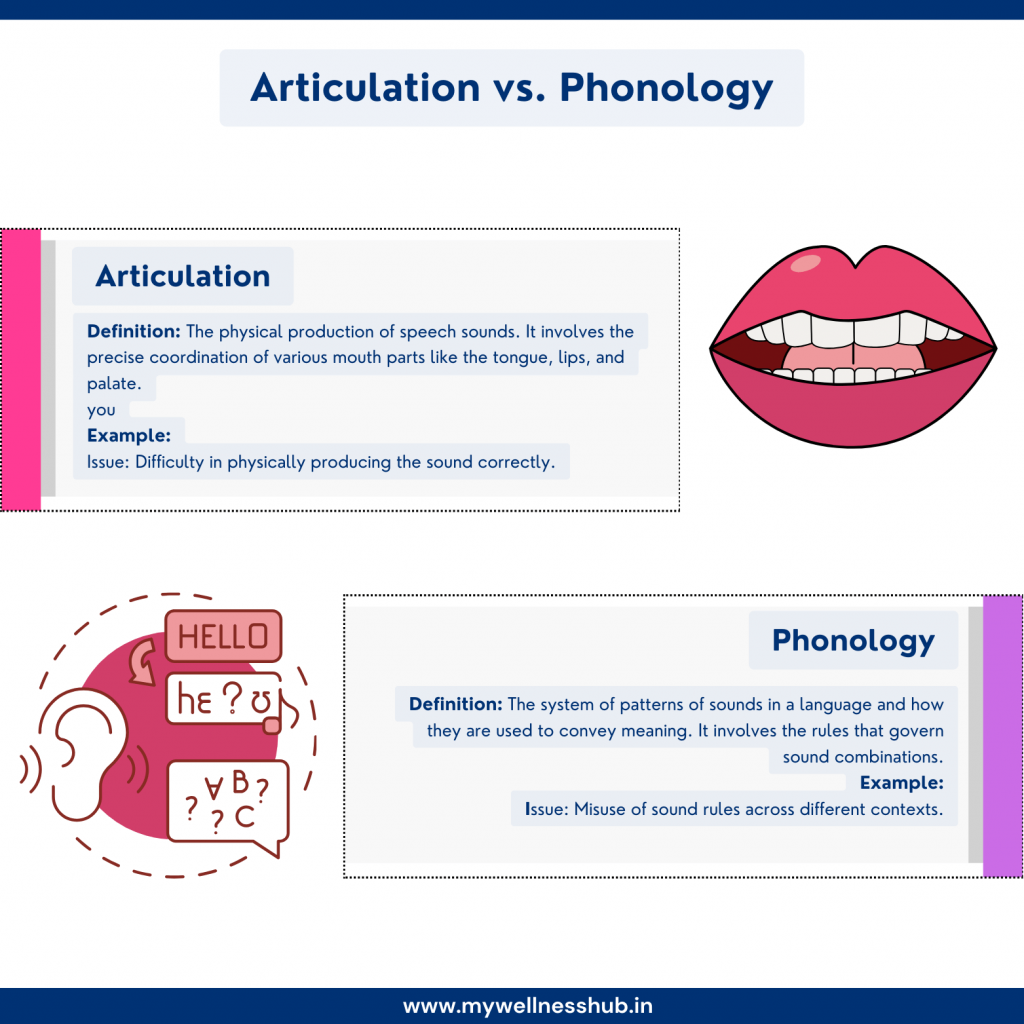Speak Clearly and Learn: Master Articulation Skills
Last Updated: May 17, 2024
Have you ever wondered how we create different sounds using our mouth? Or why do some people speak so clearly while others don’t? This isn’t just about talent or practice; it’s about something called articulation. Articulation in speech is the ability to form distinct sounds that make verbal communication possible and effective. Whether you’re chatting with friends, presenting at work, or even ordering a coffee, how you articulate your words can make a big difference in how you’re understood.
But articulation isn’t just about speech. While this guide focuses primarily on articulation in the realm of speaking, it’s a concept that spans various disciplines, including education and music. Understanding the basics of articulation can not only improve how you communicate but also enhance your appreciation for how language functions across different contexts.
Book Your Free Online Speech Therapy Now
The Basics of Articulation
When we talk about articulation in the context of speech, we’re referring to the precise movement of various parts of our mouth that enable us to pronounce different sounds clearly. Think of it as the art of making your spoken words not just heard but also understood. Whether it’s a deep conversation with a friend or a quick chat with a colleague, the clarity of your speech impacts how your message is received.
How Does Articulation Work?

This involves several key players: the tongue, lips, jaw, and even the roof of your mouth. Here’s a quick breakdown:
- Tongue: Probably the most flexible articulator, your tongue helps in shaping sounds as it moves against your teeth or the roof of your mouth. It’s essential for producing the nuances in vowels and crisp edges of consonants.
- Lips: Your lips help in creating sounds like /p/, /b/, and /m/, where their positioning can change the nature of the sound dramatically. Ever noticed how your lips come together for a /p/ and open swiftly?
- Jaw: The movement of your jaw assists in modulating the space within your mouth, which affects how sounds resonate. Try saying ‘yes’ and ‘no’ slowly, and you’ll feel your jaw working.
- Palate: This includes both the hard and soft parts of the roof of your mouth. It is crucial for sounds that require airflow management, like the difference between /k/ and /g/.
Read more about on How Oral Habits Affect Speech and Articulation in Children
The Role of the International Phonetic Alphabet (IPA)
To aid in understanding and documenting these sounds, speech experts use the International Phonetic Alphabet (IPA). This tool provides a unique symbol for each sound, regardless of the language, ensuring that learners and specialists can quickly identify and replicate the correct pronunciation. Exploring the IPA might seem daunting, but it’s like reading a map; once you know the symbols, you can pronounce any word from any language accurately!
Importance of Clear Articulation
Why Clear Articulation Matters
Imagine trying to communicate in a noisy environment or speaking to someone who is hard of hearing. In these scenarios, clear articulation isn’t just helpful—it’s essential. It makes the difference between being understood and being misinterpreted. It enhances the clarity of your message and ensures that your words have the impact you intend.
In everyday life, whether it’s talking to a friend over coffee or asking for directions, how clearly you articulate your words can significantly influence the listener’s response. Misarticulation can lead to misunderstandings or even amusement—imagine asking for a “bear” instead of a “pear” at a grocery store!
Also Read: Speak Like a Pro: Mastering Sounds with Articulation Places
Articulation in Professional Settings
In professional settings, the stakes are even higher. Good articulation conveys confidence and competence. It can help you during presentations, negotiations, or when giving instructions to a team. In careers where communication is key, such as teaching, sales, or healthcare, being articulate is not just a nice-to-have; it’s a must.
Benefits of Clear Articulation
| Area of Life | Benefit |
|---|---|
| Personal Interactions | Enhances clarity and understanding |
| Professional Settings | Conveys confidence and competence |
| Educational Outcomes | Improves learning and academic performance |
| Social Situations | Increases social engagement and relationship building |
| Customer Service | Enhances customer satisfaction and resolution effectiveness |
| Public Speaking | Boosts audience engagement and message retention |
| Leadership | Strengthens leadership presence and team motivation |
Articulation Challenges and Support
Common Articulation Challenges in Children
Many children encounter hurdles as they learn to speak clearly. Some might struggle with certain sounds, like saying “wabbit” instead of “rabbit” or “thoup” for “soup.” These challenges can make it hard for kids to express themselves and may affect their confidence when they speak. It’s not just about cute mispronunciations—these challenges can impact social interactions and academic performance if not addressed early.
Know more: Help Kids Speak Clearly: Tips for Parents as Role Models
Articulation vs. Phonology: Understanding the Difference

It’s important to differentiate between articulation and phonology issues, as they require different approaches for correction. These problems are typically about the physical production of sounds. For example, a child may not be able to pronounce the “r” sound correctly due to difficulty in positioning the tongue.
On the other hand, phonological problems involve patterns or rules that the child uses incorrectly. A child with phonological issues might consistently replace all sounds made at the back of the mouth (like “k” and “g”) with sounds made at the front of the mouth, saying “tup” for “cup” or “doe” for “go.“
Common Articulation Errors in Children
| Sound Expected | Common Error | Example Word |
|---|---|---|
| R | W | Rabbit → Wabbit |
| S | Th | Soup → Thoup |
| L | W | Light → Wight |
| TH | F | Three → Free |
| K | T | Cat → Tat |
| G | D | Go → Do |
| F | P | Fish → Pish |
| V | B | Van → Ban |
| CH | SH | Chair → Share |
| J | Z | Juice → Zooce |
Know more: Identifying Phonological Disorders: Expert Tips for Parents
Practical Tips to Improve Articulation
Improving articulation isn’t just about speaking more clearly; it’s about enhancing your overall communication skills. Here are some practical, easy-to-implement tips that can help anyone improve their articulation, whether for professional engagements or everyday conversations.
1. Slow Down
One of the simplest ways to improve your articulation is to slow down your speech. Rushing through words often leads to slurred and unclear articulation. Take a breath, slow down, and give each word its due space and time.
2. Practice Tongue Twisters
Tongue twisters are a fun and effective way to practice articulation. They help you work on specific sounds and improve your speech clarity. Start with simpler phrases and gradually work up to more complex ones. Here’s a classic to try: “Peter Piper picked a peck of pickled peppers.”
3. Focus on Breathing
Proper breathing techniques are essential for clear articulation. Practice diaphragmatic breathing, which involves breathing deeply from the belly rather than shallowly from the chest. This provides the control and airflow needed to speak clearly.
4. Record and Listen
Record yourself speaking and listen to the playback. This can be an eye-opening experience as you hear misarticulations you may not be aware of while speaking. Use this feedback to focus on areas that need improvement.
5. Articulation Exercises
Dedicate time each day to practice articulation exercises. These might include repeating difficult sounds, reading aloud while articulating clearly, or even singing to improve your vocal control.
Explore more on our article Enhancing Language Development through Articulation Programs.
6. Seek Feedback
Don’t hesitate to ask for feedback from trusted friends or family members. Sometimes, an external perspective can provide insights into how you are articulating and what you might improve.
Conclusion
Throughout this guide, we’ve learned about articulation, which is crucial for speaking clearly and for smooth transitions in education. Articulation helps us form precise sounds and is also important in schools to ensure that course credits are recognized from one institution to another.
If you’re looking to improve your speech or help your children speak more clearly, Wellness Hub offers many resources and services to assist you. Visit Wellness Hub to find out how our speech therapy and educational materials can help you communicate better. Why not take the first step towards clearer communication today? We’re excited to hear about your progress and answer any questions in the comments below.
Frequently Asked Questions:
1. What is articulation in speech?
Articulation in speech refers to the way we use our mouth, tongue, and vocal cords to create clear and distinct sounds. This process allows us to form words and sentences that are understandable to others.
2. Why is good articulation important?
Good articulation is essential for effective communication. It ensures that your message is clearly understood and reduces misunderstandings in both personal and professional interactions.
3. What are common articulation challenges in children?
Common challenges in children include difficulties in producing certain sounds correctly, which can lead to unclear speech. For example, a child might say “wabbit” instead of “rabbit” or “thoup” instead of “soup.”
4. How can I improve my articulation skills?
Improving articulation can be achieved through various practices such as speaking slowly, practicing tongue twisters, focusing on breathing, and recording yourself to hear and correct misarticulations.
5. What is the difference between articulation and phonology?
Articulation involves the physical production of sounds, while phonology deals with the patterns of sounds in a language and how they are used to convey meaning. Phonology issues might include using a sound incorrectly across different words.
6. How can speech pathologists help with articulation issues?
Speech pathologists can help individuals with articulation issues by identifying specific problems and developing personalized treatment plans. These may include exercises to improve the precision of sound production and techniques to enhance speech clarity.
7. What resources does Wellness Hub offer for improving articulation?
Wellness Hub provides a variety of resources and services to help improve articulation, including speech therapy sessions, educational workshops, and online guides. These resources are designed to support individuals in achieving clearer and more effective communication.
8. Can understanding articulation help in education?
Yes, understanding articulation is beneficial in education, particularly when it comes to course articulation agreements between institutions. Knowing about these can help students plan their education paths more efficiently, ensuring their courses are recognized when transferring schools.
9. What exercises can help improve children’s articulation skills?
Children can improve their skills through various fun and engaging exercises. These include practicing tongue twisters, singing songs to enhance vocal control, and repeating challenging words or phrases. Speech pathologists often use games and targeted activities that encourage children to pronounce sounds correctly and clearly.
10. How does effective articulation impact professional success?
Effective articulation is crucial for professional success as it enhances the clarity and persuasiveness of your communication. Clear articulation helps in presenting ideas effectively, participating confidently in meetings, and making a positive impression during interviews. Professionals who articulate well are often seen as more competent and trustworthy.
About the Author:
Anuradha Karanam
Speech-language pathologist (7+ years of experience)
Anuradha Karanam is a skilled speech-language pathologist with over 6 years of experience. Fluent in Tamil, Telugu, Hindi, and English, she specializes in parent counseling, speech sound disorders, fluency assessment, and speech-language evaluations. Anuradha excels at working with children with developmental disorders, offering creative and effective therapy programs. Currently, at Wellness Hub, she holds a BASLP degree and is registered with the RCI (CRR No A85500). Her patience, ambition, and dedication make her a trusted expert in her field.
Connect with Anuradha to learn more about how she can help you or your loved one find their voice.
Book your Free Consultation Today
Parent/Caregiver Info:
Client’s Details:
* Error Message








